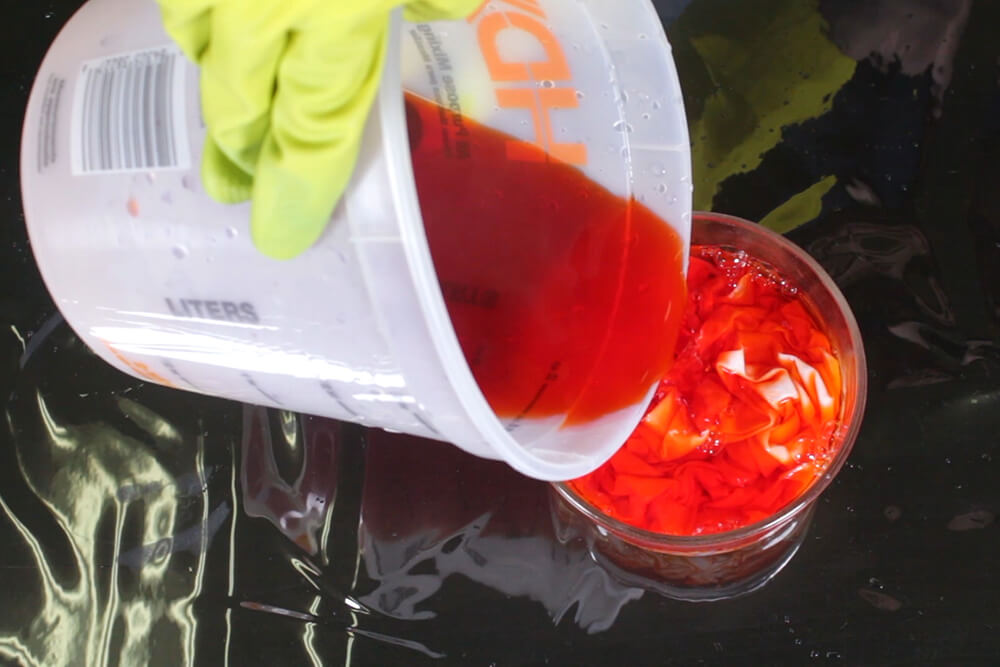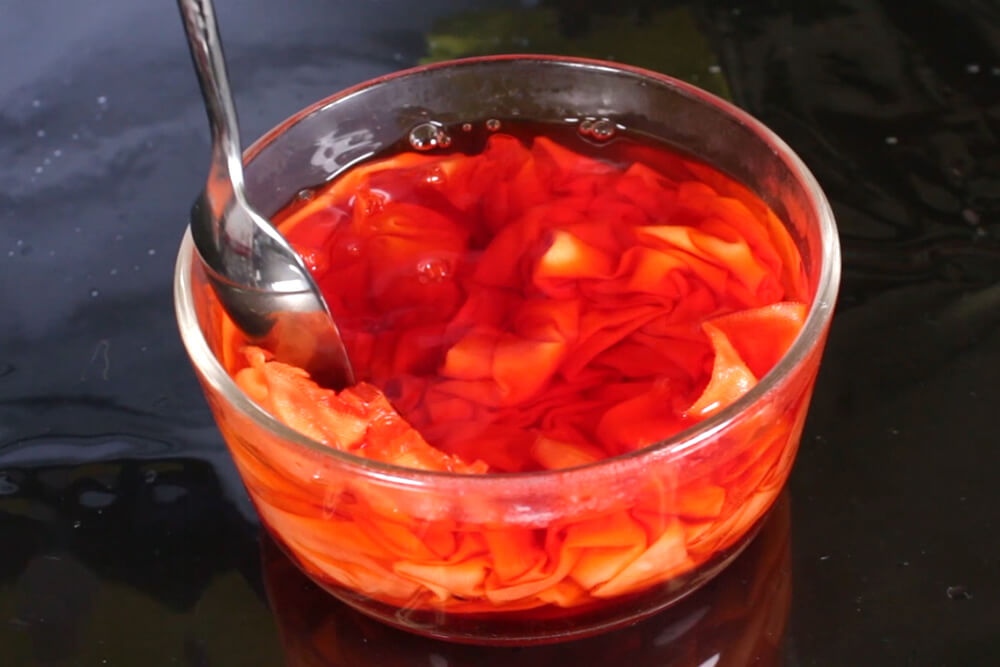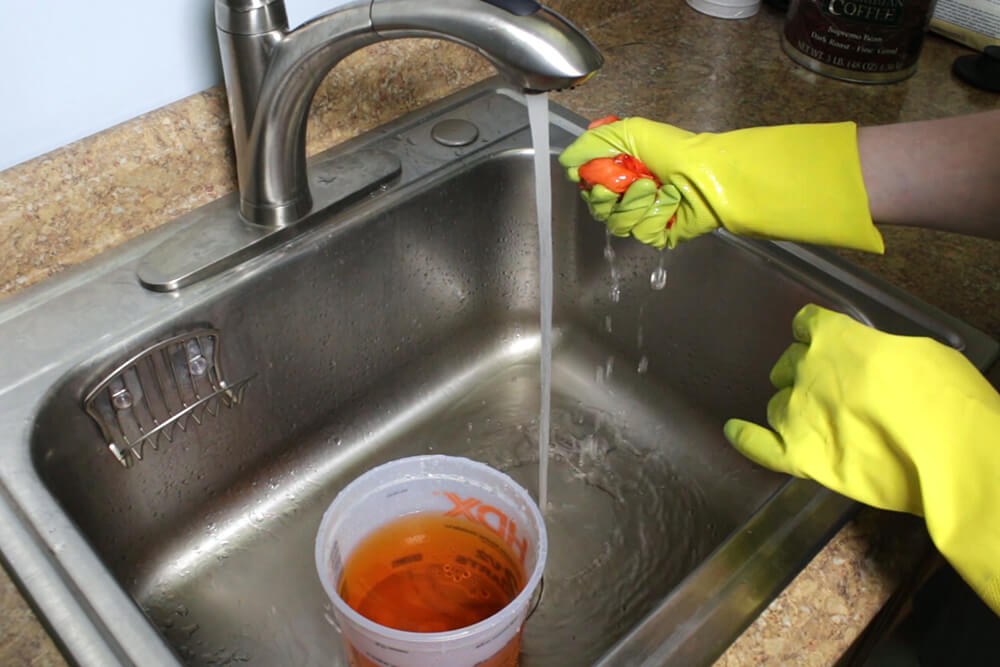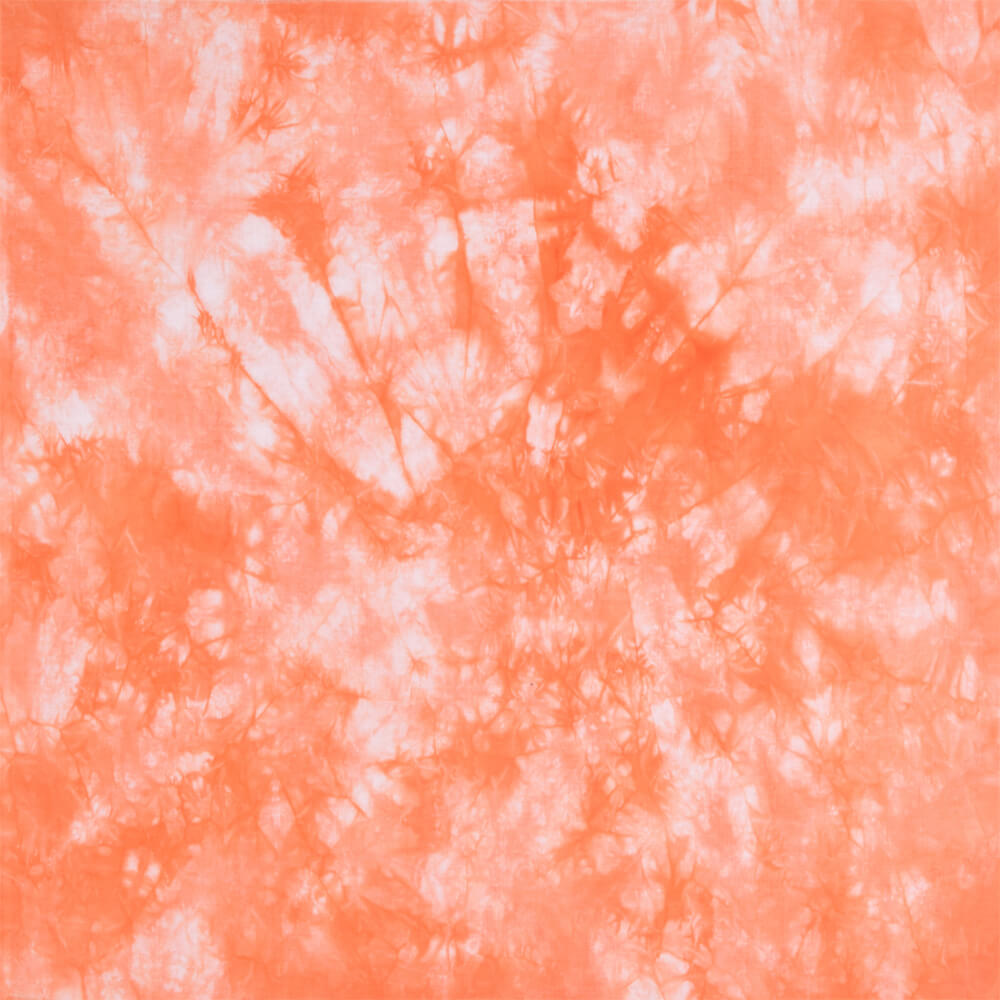How to Dye Fabric: Low Water Immersion Technique
- By Clara
- Beginner
- 30 minutes
The low water immersion technique will create a mottled, uneven effect when dyeing fabric. By using little water and tightly packing the fabric, you’ll get a strong pattern like this, or use more water and get a subtler result. You can also create other patterns by tying or folding the fabric in different ways.
Want to get the printable PDF instructions?
Materials
- Fabric
- Fabric dye
- Container
- Gloves
- Spoon
Video
Instructions
Step 1: Prepare for dyeing
Make sure your work space is covered with plastic or something to protect it from staining. For best results, use a fabric made from natural fibers like cotton and pre-wash the fabric. Wet fabric takes dye better than dry fabric, so soak it in warm water. Heat enough water to cover the fabric. Then scrunch the fabric and put it into a container for dyeing. The more tightly packed, the more mottled the result will be. The dye won’t be able to reach parts of the fabric.
Step 2: Add the dye
When the water is near boiling, pour it into a separate container. Put on rubber gloves, shake the dye, and add it to the water. I’m using tangerine Rit dye. The amount depends on the color you want to achieve, and the amount of water you’re using. Stir and pour it over the fabric. The more you move around the fabric, the less mottled it will be. Let it sit for about half an hour, moving it around occasionally if you want a more even color. Using a larger container and more water will allow more of the fabric to absorb dye. I’m using a small container with tightly packed fabric, so the results will be more dramatic with areas of strong color and no color. If you want to use more than one color, pour different colors over areas of the fabric. The water doesn’t need to cover the fabric completely, so the colors don’t mix too much.
Step 3: Rinse the Fabric
After half an hour or more, rinse the fabric with warm water, then cold, until the water runs clear. Machine wash on cold and hang dry. Experiment with low water immersion by using one or more colors, and varying container sizes and amounts of water. You can also create other patterns by tying or folding the fabric in different ways.
Ready to try it out? Find fabric dye here.
Cache time: 9:58:10 PM

















